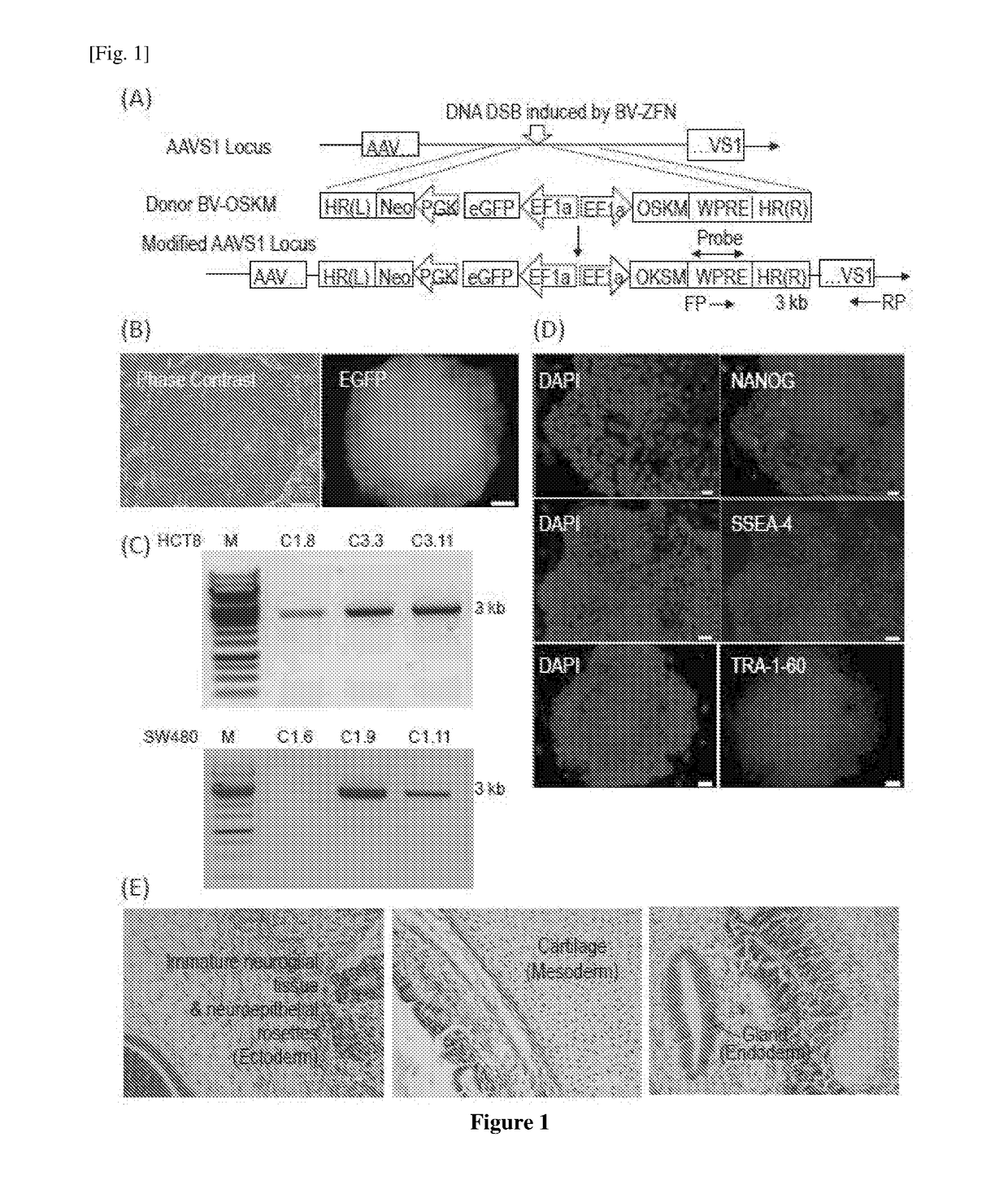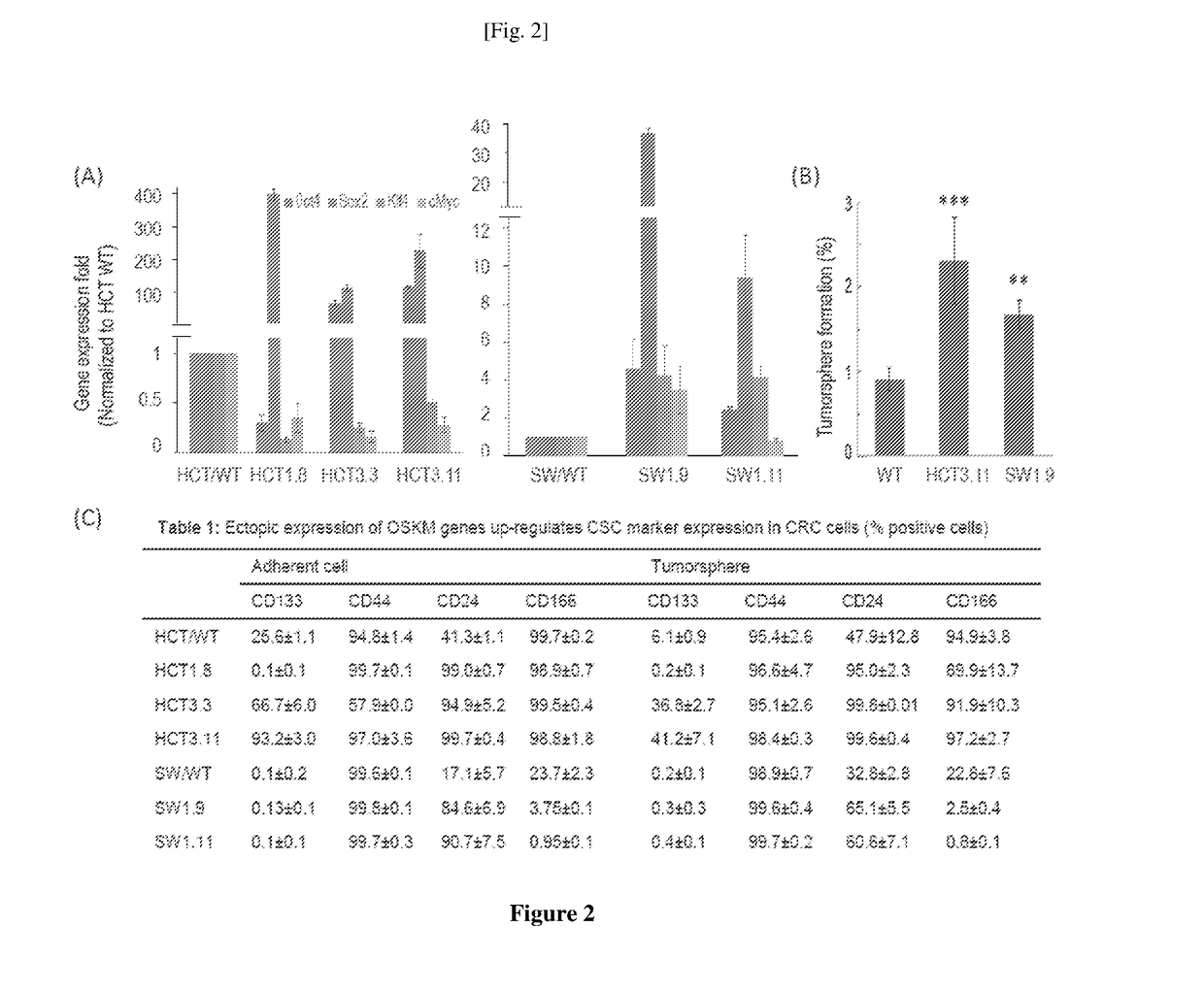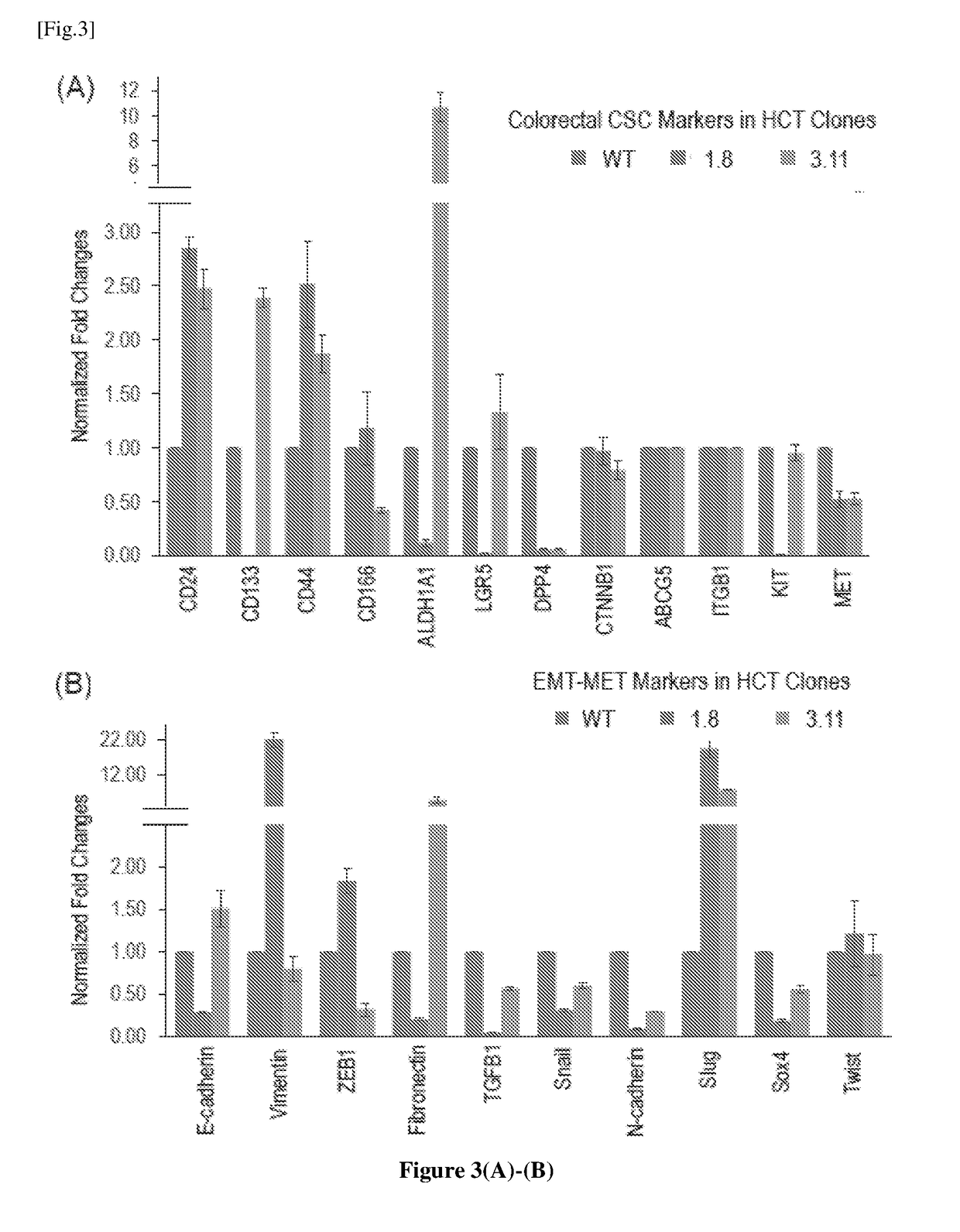A method to up-regulate cancer stem cell markers for the generation of antigen specific cytotoxic effector t cells
a cancer stem cell and marker technology, applied in the field of cancer immunotherapy, can solve the problems of relapse and metastasis, failure to fully eradicate cscs by these conventional strategies, and limited development of this strategy
- Summary
- Abstract
- Description
- Claims
- Application Information
AI Technical Summary
Benefits of technology
Problems solved by technology
Method used
Image
Examples
example 1
Materials and Methods
[0080]Zinc-finger nuclease technology was employed to insert a set of cell reprogramming factors named as the OSKM factors (Oct4, Sox2, Klf4, and cMyc) into CRC cell genome for induced reprogramming of these cancerous cells. Using a tumorsphere formation method, CSC-like cells were enriched from the reprogrammed CRC cells. These CSC-like cells consistently displayed the up-regulated expression of CD24 and many other colorectal CSC-related antigens. These CSC-like cells were then used for dendritic cell (DC) vaccination, which has been tested as an adjuvant treatment for CRC. After autologous naïve T cells were primed with DCs pulsed with cell lysates of OSKM-expressing CRCs, T cells were interrogated in IFN-gamma EliSpot assays by restimulation with T2 cells loaded with CSC antigen-related peptides. Significantly increased IFN-gamma positive spots confirmed that the pulsed DCs were capable of eliciting anti-CSC antigen responses in autologous T cells. Hence, OSK...
example 2
Generation of Colorectal Cancer iPC Cells by Stable Expression of the OSKM Genes
[0100]A baculoviral transduction-based engineered zinc-finger nuclease (ZFN) technology was recently developed for site-specific integration of the OSKM factor genes (Phang et al., 2013). The technology involves the use of two non-integrative baculoviral vectors, one expressing ZFNs (BV-ZFN) and another as a donor vector encoding the OSKM transcription factor genes (BV-OSKM). BV-OSKM carries an expression cassette containing human Oct4, Klf4, Sox2, and c-Myc genes joined with self-cleaving 2A sequence and IRES as a fusion gene and driven by the EF1a promoter. The expression cassette is flanked on both sides by sequences homologous to the AAVS1 locus. After co-transduction with BV-ZFN and BV-OSKM (FIG. 1A), the expression cassette can be effectively introduced into the AAVS1 locus in human chromosome 19, a site with an open chromatin structure flanked by insulator elements that shield an integrated transg...
example 3
Ectopic Expression of OSKM Confers CSC-Like Properties to Human CRC Cells
[0102]HCT8- and SW480-derived iPC cells were expanded in a CSC medium composed of 1:1 mixture of DMEM / F12 supplemented with 1% FBS and 20 ng / ml human epidermal growth factor (EGF). Using a RTqPCR method, the relative expression levels of OSKM genes in the selected clones were determined (FIG. 2A). Compared to wild-type (WT) cells, Sox2 over-expression, from 8- to 400-fold, was observed in all examined HCT8 and SW480 clones. Up-regulation of Oct4 was observed in 4 out of 5 examined clones, ranging from 2- to 100-fold. Western blot analysis confirmed the up-regulated expression of Oct4 and Sox2 proteins in these clones. Up-regulation of c-Myc and Klf4 was not so obvious, possibly because of high-level expression of the endogenous genes in the HCT8 and SW480 CRC subclones.
[0103]The roles of the ectopic expression of the OSKM gene in phenotypic features of CSCs were sought to be clarified. The ability to form tumor...
PUM
| Property | Measurement | Unit |
|---|---|---|
| temperature | aaaaa | aaaaa |
| size | aaaaa | aaaaa |
| total volume | aaaaa | aaaaa |
Abstract
Description
Claims
Application Information
 Login to View More
Login to View More - Generate Ideas
- Intellectual Property
- Life Sciences
- Materials
- Tech Scout
- Unparalleled Data Quality
- Higher Quality Content
- 60% Fewer Hallucinations
Browse by: Latest US Patents, China's latest patents, Technical Efficacy Thesaurus, Application Domain, Technology Topic, Popular Technical Reports.
© 2025 PatSnap. All rights reserved.Legal|Privacy policy|Modern Slavery Act Transparency Statement|Sitemap|About US| Contact US: help@patsnap.com



